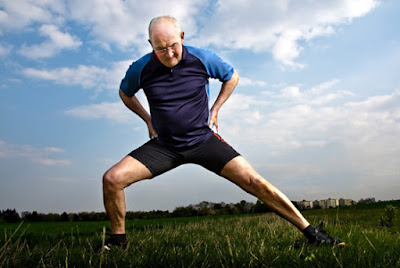The period between 45 and 64 years of age brings with it a
variety of subtle changes in the body’s structure and function. When life is busy and mind is active, these
changes are generally not evident. Even
when they become evident, they are not usually the source of profound
concern. Your parents, older students in
your class, and people with whom you will be working are, nevertheless,
experiencing these changes.
·
Decrease in bone mass and density
·
Increase in vertebral compression
·
Degenerative changes in joint cartilage
·
Increase in adipose tissue-loss of lean body
mass
·
Decrease in capacity to engage in physical work
·
Decrease in visual acuity
·
Decrease in basal energy requirements
·
Decrease in fertility
·
Decrease in sexual function
For some midlife adults these health concerns can be quite
threatening, especially for those who view aging with apprehension and
fear. Some middle-aged people reject
these physical changes and convice themselves they are sick. Indeed, hypochondriasis is much more common
among midlife people than among young people.
Two medical conditions influenced by physical activity,
osteoporosis and osteoarthritis, deserve careful examination.
Osteoporosis
Osteoporosis is a condition often seen in
late middle-aged women. However, it is
not fully understood why menopausal women are so susceptible to the increase in
calcium loss that leads to fracture of the hip, wrist, and vertebral
column. Half of all women over the age
of 50 will likely suffer an osteoporosis-related fracture.
The endocrine system plays a large role in the development
of osteoporosis. At the time of
menopause, a woman’s ovaries begin a rapid decrease in the production of
estrogen, one of two main hormones associated with the menstrual cycle. This lower level of estrogen may decrease the
conversion of the precursors of vitamin D into the active form of vitamin D,
the form necessary for absorbing calcium from the digestive tract. As a result, calcium may be drawn from the
bones for use elsewhere in the body.
Premenopausal women have the opportunity to build and
maintain a healthy skeleton through an appropriate intake of calcium. Current recommendations are for an intake of
1200 mg of calcium per day. Three to
four daily servings of low-fat dairy products should provide sufficient
calcium. Adequate vitamin D must also be
in the diet because it aids in the absorption of calcium.
Many women do not take in an adequate amount of calcium. Calcium supplements, again in combination
with vitamin D, can be used to achieve recommended calcium levels. It is known as calcium carbonate, a highly
advertised form of calcium, is no more easily absorbed by the body than are
other forms of calcium salts.
In premenopausal women, calcium deposition in bone is
facilitated by exercise, particularly exercise that involves movement of the
extremities. Today, women are encouraged
to consume at least the recommended servings from the milk group and engage in
regular physical activity that involves the weight-bearing muscles of the legs,
such as aerobics, jogging, or walking.
Postmenstrual women who are not elderly can markedly slow
the resorption of calcium from their bones through the use of hormone replacement
therapy (HRT). When combined with a
daily intake of 1500 mg of calcium, vitamin D, and regular exercise, HRT almost
eliminates calcium loss. Women will need
to work closely with their physicians in monitoring the use of HRT because of
continuing concern over the role of HRT and the development of breast cancer
and the increased risk of coronary artery disease and stroke.
Osteoarthritis
Arthritis is an umbrella term for more than 100 forms of
joint inflammation. The most common form
is osteoarthritis. It is likely that as
we age, all of us will develop osteoarthritis to some degree. Pften called “wear and tear” arthritis,
osteoarthritis occurs primarily in the weight-bearing joints of the knee, hip,
and spine. In this form of arthritis,
joint damage can occur to bone ends, cartilaginous cushions, and related
structures as the years of constant friction and stress accumulate.
The object of current management of osteoarthritis (and
other forms) is not to cure the disease but rather to reduce discomfort, limit
joint destruction, and maximize joint mobility.
Aspirin and nonsteroidal antinflamatory agents are the drugs most
frequently used to treat osteoarthritis.
It
is now believed that osteoarthritis develops most commonly in people with a
genetic predisposition for excessive damage to the weight –bearing joints. Thus the condition seems to “run in
families”. Further, studies comparing
the occurrence of osteoarthritis in those who exercise and those do not
demonstrate that regular movement activity may decrease the likelihood of
developing this form of arthritis.













No comments:
Post a Comment